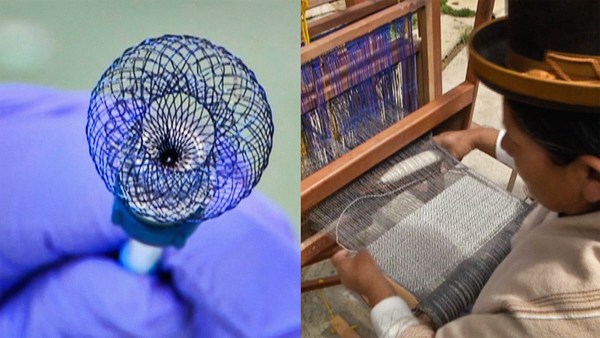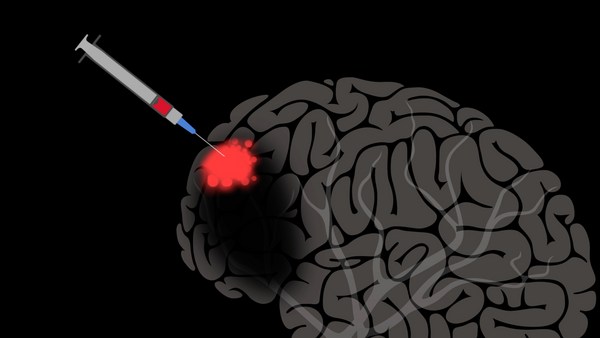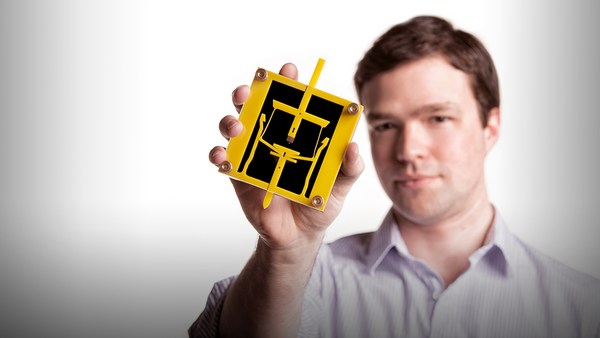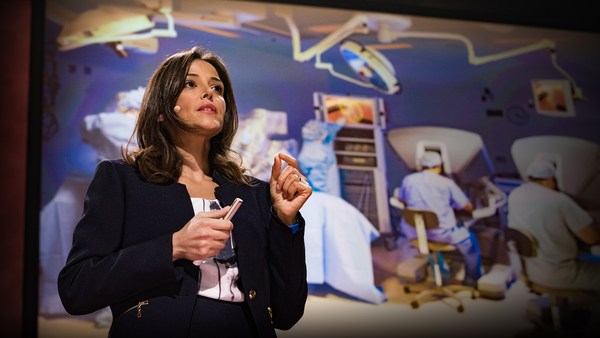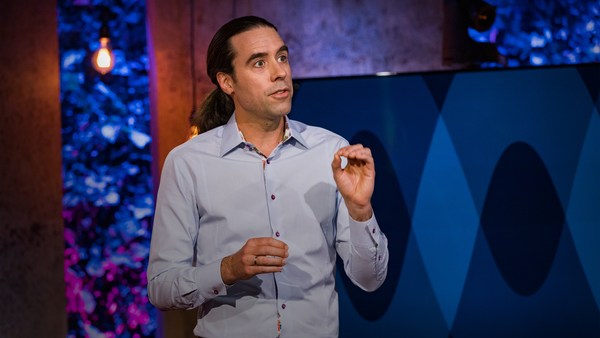What if I told you there was a new technology that, when placed in the hands of doctors and nurses, improved outcomes for children and adults, patients of all ages; reduced pain and suffering, reduced time in the operating rooms, reduced anesthetic times, had the ultimate dose-response curve that the more you did it, the better it benefitted patients? Here's a kicker: it has no side effects, and it's available no matter where care is delivered. I can tell you as an ICU doctor at Boston Children's Hospital, this would be a game changer for me. That technology is lifelike rehearsal. This lifelike rehearsal is being delivered through medical simulation.
I thought I would start with a case, just to really describe the challenge ahead, and why this technology is not just going to improve health care but why it's critical to health care. This is a child that's born, young girl. "Day of life zero," we call it, the first day of life, just born into the world. And just as she's being born, we notice very quickly that she is deteriorating. Her heart rate is going up, her blood pressure is going down, she's breathing very, very fast. And the reason for this is displayed in this chest X-ray.
That's called a babygram, a full X-ray of a child's body, a little infant's body. As you look on the top side of this, that's where the heart and lungs are supposed to be. As you look at the bottom end, that's where the abdomen is, and that's where the intestines are supposed to be. And you can see how there's sort of that translucent area that made its way up into the right side of this child's chest. And those are the intestines -- in the wrong place. As a result, they're pushing on the lungs and making it very difficult for this poor baby to breathe.
The fix for this problem is to take this child immediately to the operating room, bring those intestines back into the abdomen, let the lungs expand and allow this child to breathe again. But before she can go to the operating room, she must get whisked away to the ICU, where I work. I work with surgical teams. We gather around her, and we place this child on heart-lung bypass. We put her to sleep, we make a tiny little incision in the neck, we place catheters into the major vessels of the neck -- and I can tell you that these vessels are about the size of a pen, the tip of a pen -- and then we have blood drawn from the body, we bring it through a machine, it gets oxygenated, and it goes back into the body. We save her life, and get her safely to the operating room.
Here's the problem: these disorders -- what is known is congenital diaphragmatic hernia -- this hole in the diaphragm that has allowed these intestines to sneak up -- these disorders are rare. Even in the best hands in the world, there is still a challenge to get the volume -- the natural volume of these patients -- in order to get our expertise curve at 100 percent. They just don't present that often. So how do you make the rare common?
Here's the other problem: in the health care system that I trained for over 20 years, what currently exists, the model of training is called the apprenticeship model. It's been around for centuries. It's based on this idea that you see a surgery maybe once, maybe several times, you then go do that surgery, and then ultimately you teach that surgery to the next generation. And implicit in this model -- I don't need to tell you this -- is that we practice on the very patients that we are delivering care to. That's a problem. I think there's a better approach. Medicine may very well be the last high-stakes industry that does not practice prior to game time. I want to describe to you a better approach through medical simulation.
Well, the first thing we did is we went to other high-stakes industries that had been using this type of methodology for decades. This is nuclear power. Nuclear power runs scenarios on a regular basis in order to practice what they hope will never occur. And as we're all very familiar, the airline industry -- we all get on planes now, comforted by the idea that pilots and crews have trained on simulators much like these, training on scenarios that we hope will never occur, but we know if they did, they would be prepared for the worst. In fact, the airline industry has gone as far as to create fuselages of simulation environments, because of the importance of the team coming together. This is an evacuation drill simulator. So again, if that ever were to happen, these rare, rare events, they're ready to act on the drop of a dime.
I guess the most compelling for me in some ways is the sports industry -- arguably high stakes. You think about a baseball team: baseball players practice. I think it's a beautiful example of progressive training. The first thing they do is go out to spring training. They go to a spring training camp, perhaps a simulator in baseball. They're not on the real field, but they're on a simulated field, and they're playing in the pregame season. Then they make their way to the field during the season games, and what's the first thing they do before they start the game? They go into the batting cage and do batting practice for hours, having different types of pitches being thrown at them, hitting ball after ball as they limber their muscles, getting ready for the game itself. And here's the most phenomenal part of this, and for all of you who watch any sport event, you will see this phenomenon happen. The batter gets into the batter's box, the pitcher gets ready to pitch. Right before the pitch is thrown, what does that batter do? The batter steps out of the box and takes a practice swing. He wouldn't do it any other way.
I want to talk to you about how we're building practice swings like this in medicine. We are building batting cages for the patients that we care about at Boston Children's. I want to use this case that we recently built. It's the case of a four-year-old who had a progressively enlarging head, and as a result, had loss of developmental milestones, neurologic milestones, and the reason for this problem is here -- it's called hydrocephalus.
So, a quick study in neurosurgery. There's the brain, and you can see the cranium surrounding the brain. What surrounds the brain, between the brain and cranium, is something called cerebrospinal fluid or fluid, which acts as a shock absorber. In your heads right now, there is cerebrospinal fluid just bathing your brains and making its way around. It's produced in one area and flows through, and then is re-exchanged. And this beautiful flow pattern occurs for all of us. But unfortunately in some children, there's a blockage of this flow pattern, much like a traffic jam. As a result, the fluid accumulates, and the brain is pushed aside. It has difficulty growing. As a result, the child loses neurologic milestones. This is a devastating disease in children.
The cure for this is surgery. The traditional surgery is to take a bit of the cranium off, a bit of the skull, drain this fluid out, stick a drain in place, and then eventually bring this drain internal to the body. Big operation. But some great news is that advances in neurosurgical care have allowed us to develop minimally invasive approaches to this surgery. Through a small pinhole, a camera can be inserted, led into the deep brain structure, and cause a little hole in a membrane that allows all that fluid to drain, much like it would in a sink. All of a sudden, the brain is no longer under pressure, can re-expand and we cure the child through a single-hole incision.
But here's the problem: hydrocephalus is relatively rare. And there are no good training methods to get really good at getting this scope to the right place. But surgeons have been quite creative about this, even our own. And they've come up with training models. Here's the current training model.
(Laughter)
I kid you not. This is a red pepper, not made in Hollywood; it's real red pepper. And what surgeons do is they stick a scope into the pepper, and they do what is called a "seedectomy."
(Laughter)
They use this scope to remove seeds using a little tweezer. And that is a way to get under their belts the rudimentary components of doing this surgery. Then they head right into the apprenticeship model, seeing many of them as they present themselves, then doing it, and then teaching it -- waiting for these patients to arrive. We can do a lot better.
We are manufacturing reproductions of children in order for surgeons and surgical teams to rehearse in the most relevant possible ways. Let me show you this. Here's my team in what's called the SIM Engineering Division of the Simulator Program. This is an amazing team of individuals. They are mechanical engineers; you're seeing here, illustrators. They take primary data from CT scans and MRIs, translate it into digital information, animate it, put it together into the components of the child itself, surface-scan elements of the child that have been casted as needed, depending on the surgery itself, and then take this digital data and be able to output it on state-of-the-art, three-dimensional printing devices that allow us to print the components exactly to the micron detail of what the child's anatomy will look like. You can see here, the skull of this child being printed in the hours before we performed this surgery.
But we could not do this work without our dear friends on the West Coast in Hollywood, California. These are individuals that are incredibly talented at being able to recreate reality. It was not a long leap for us. The more we got into this field, the more it became clear to us that we are doing cinematography. We're doing filmmaking, it's just that the actors are not actors. They're real doctors and nurses. So these are some photos of our dear friends at Fractured FX in Hollywood California, an Emmy-Award-winning special effects firm. This is Justin Raleigh and his group -- this is not one of our patients --
(Laughter)
but kind of the exquisite work that these individuals do. We have now collaborated and fused our experience, bringing their group to Boston Children's Hospital, sending our group out to Hollywood, California and exchanging around this to be able to develop these type of simulators.
What I'm about to show you is a reproduction of this child. You'll notice here that every hair on the child's head is reproduced. And in fact, this is also that reproduced child -- and I apologize for any queasy stomachs, but that is a reproduction and simulation of the child they're about to operate on. Here's that membrane we had talked about, the inside of this child's brain. What you're going to be seeing here is, on one side, the actual patient, and on the other side, the simulator. As I mentioned, a scope, a little camera, needs to make its way down, and you're seeing that here. It needs to make a small hole in this membrane and allow this fluid to seep out. I won't do a quiz show to see who thinks which side is which, but on the right is the simulator.
So surgeons can now produce training opportunities, do these surgeries as many times as they want, to their heart's content, until they feel comfortable. And then, and only then, bring the child into the operating room. But we don't stop here. We know that a key step to this is not just the skill itself, but combining that skill with a team who's going to deliver that care.
Now we turn to Formula One. And here is an example of a technician putting on a tire and doing that time and time again on this car. But that is very quickly going to be incorporated within team-training experiences, now as a full team orchestrating the exchange of tires and getting this car back on the speedway. We've done that step in health care, so now what you're about to see is a simulated operation. We've taken the simulator I just described to you, we've brought it into the operating room at Boston Children's Hospital, and these individuals -- these native teams, operative teams -- are doing the surgery before the surgery. Operate twice; cut once. Let me show that to you.
(Video) Surgical team member 1: You want the head down or head up?
STM 2: Can you lower it down to 10?
STM 3: And then lower the whole table down a little bit?
STM 4: Table coming down.
STM 3: All right, this is behaving like a vessel. Could we have the scissors back, please?
STM 5: I'm taking my gloves, 8 to 8 1/2, all right? I'll be right in.
STM 6: Great! Thank you.
Peter Weinstock: It's really amazing. The second step to this, which is critical, is we take these teams out immediately and debrief them. We use the same technologies that are used in Lean and Six Sigma in the military, and we bring them out and talk about what went right, but more importantly, we talk about what didn't go well, and how we're going to fix it. Then we bring them right back in and do it again. Deliberative batting practice in the moments when it matters most.
Let's go back to this case now. Same child, but now let me describe how we care for this child at Boston Children's Hospital. This child was born at three o'clock in the morning. At two o'clock in the morning, we assembled the team, and took the reproduced anatomy that we would gain out of scans and images, and brought that team to the virtual bedside, to a simulated bedside -- the same team that's going to operate on this child in the hours ahead -- and we have them do the procedure. Let me show you a moment of this. This is not a real incision. And the baby has not yet been born. Imagine this.
So now the conversations that I have with families in the intensive care unit at Boston Children's Hospital are totally different. Imagine this conversation: "Not only do we take care of this disorder frequently in our ICU, and not only have we done surgeries like the surgery we're going to do on your child, but we have done your child's surgery. And we did it two hours ago. And we did it 10 times. And now we're prepared to take them back to the operating room."
So a new technology in health care: lifelike rehearsal. Practicing prior to game time.
Thank you.
(Applause)
